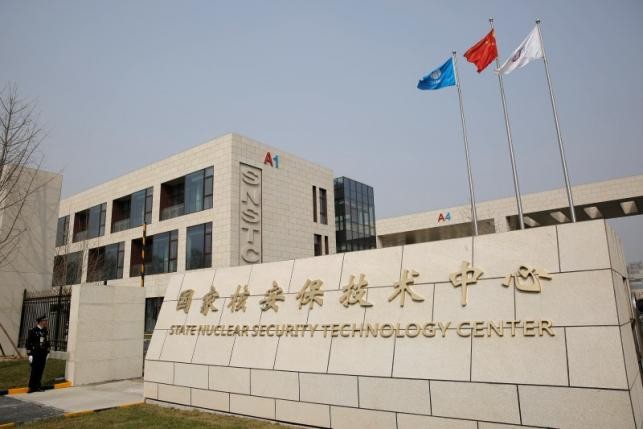China and the U.S. launched the State Nuclear Security Technology Center, the largest nuclear security center in the Asia-Pacific region, a project both countries cooperated to finance.
Located in the Changyang Science and Technology Park in Beijing, the center includes facilities for training, experiments, environmental testing, emergency response simulations and safe storage of nuclear material. The facilities were provided by top nuclear U.S. labs and are of the most up-to-date technology.
Constructed by the China Atomic Energy Authority (CAEA) and the U.S. Department of Energy, the center is equipped for training 2,000 nuclear security personnel from China and other Asia-Pacific countries every year, said CAEA chair Xu Dazhe. Xu is also the head of the State Administration of Science, Technology and Industry for National Defense (SASTIND).
The center bears advanced security measures, such as wire fences, camera towers, microwave detectors, surrounding the warehouse inside. The microwave detectors can precisely detect external disturbances such as weather, plants and animals. A laser system has also been installed to detect and intercept drones, as in the case of many countries, drone entrance to restricted areas have occurred multiple times.
Detectors installed on the center's perimeter fence can also detect behaviors indicative of invasion, such as people climbing fences. Isolation areas have also been installed to trap intruders upon entry.
Training is facilitated on a two-story facility, where instructors standing on the second floor can observe exercises performed on the ground floor.
The center can also simulate extreme weather conditions, including wind and rain, to develop trainees' swift response to emergencies during outdoor incidents. Drill grounds in the center also simulate anti-terrorism scenarios.
The center's testing and analysis equipment can precisely detect radioactive residue in the air and check the sample against a database to determine its origin.
All walls of the lab are covered with special material that blocks cellphone signals, according to an article from People's Daily.
The center's durability is tested through subjecting it to simulated sandstorms, UV ray bombardment, electromagnetic waves and high-temperature roasting.
The U.S. and China agreed to establish the center in Washington, D.C. in 2010. Under the agreement, the center will be administered by China, and the U.S. will provide the equipment.
According to a SASTIND press release, the center is responsible for international cooperation and communication on nuclear security, regulating power plant equipment and its exporting.
The Chinese mainland has 30 operational nuclear powerplants to date. The nation's nuclear power capacity is planned to reach 58 gigawatts from its current capacity of 28.31gW, with an additional 30gW to be constructed by 2020.
Under China's 13th Five-Year plan (2016-2020), China has vowed to upgrade its ability to ensure nuclear and radiation safety, including facilitating training to cope with accidents.



























